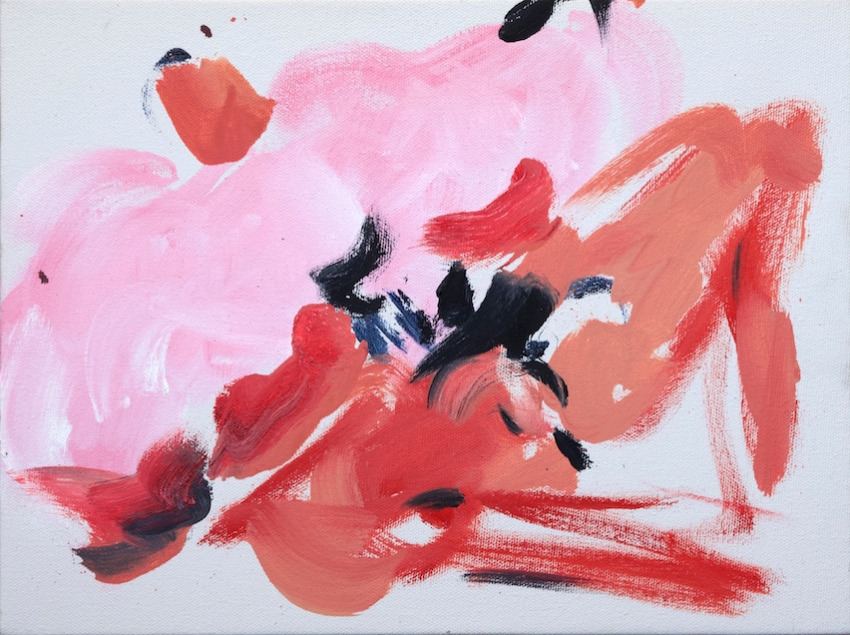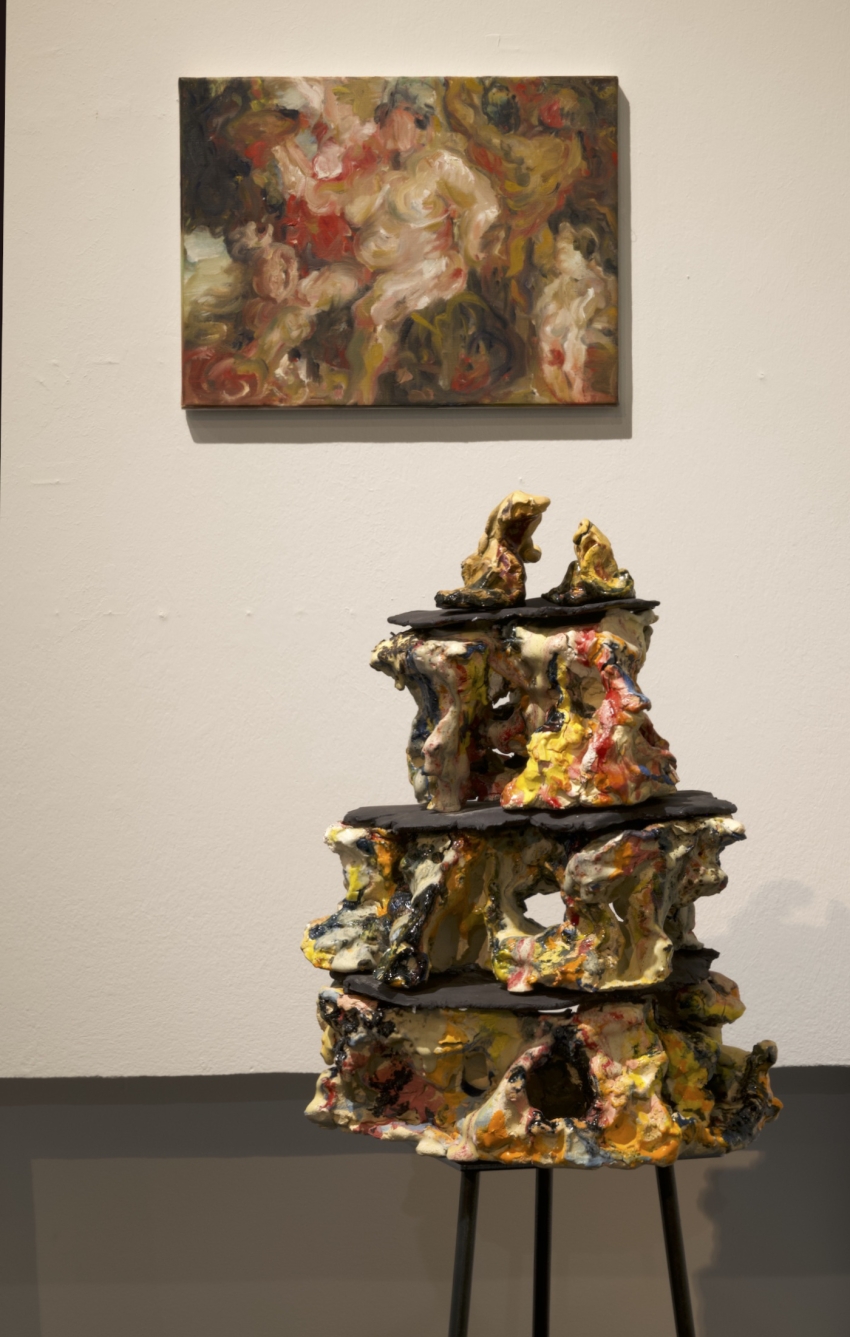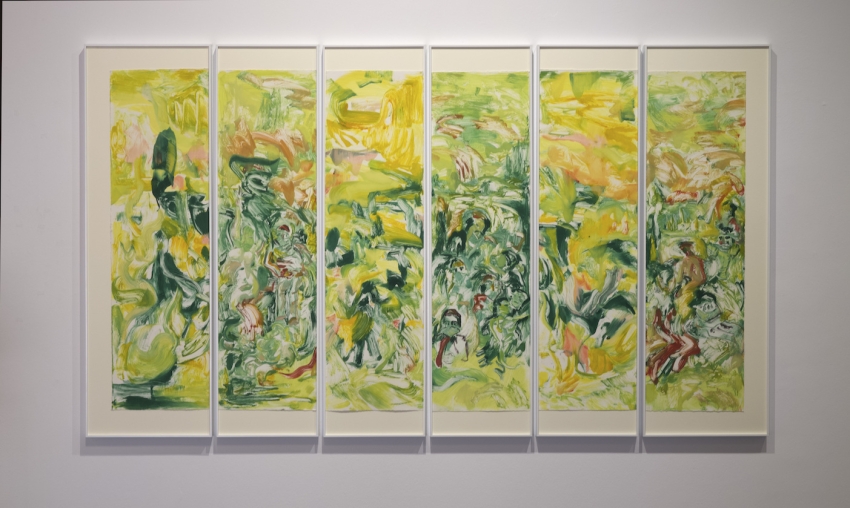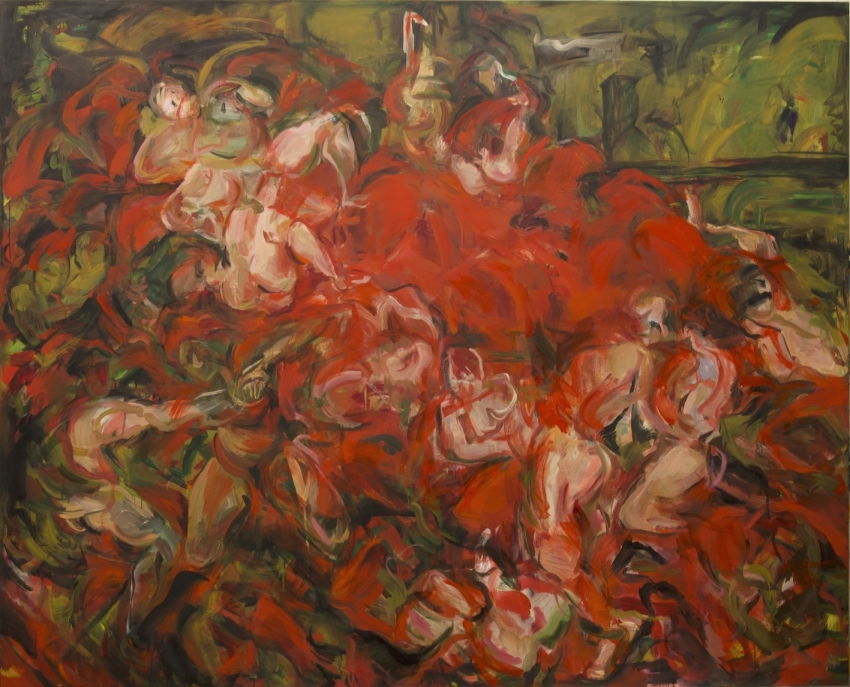CURRENT Athens is an online platform for the non-hierarchical promotion of contemporary art.
The artist attempts to restore forbidden pleasure as an intrinsic quality of painting, and she achieves this by examining, among other things, the ‘narrative bodies’ (according to Fredric Jameson) in Rubens and Delacroix’s paintings. She creates 'landscapes of flesh', which refer to a fluid materiality where the boundaries of inside and outside, space and form, the interplay of forms, are blurred and they become one. In Papazissi’s painting, the body is glorified, and desire of the flesh is deconstructed through colour. Celestial and spring symphonies morph here into settings for Dionysian orgies. The romantic sensuality of Old Masters’ paintings, such as Rubens’ Nymphs and Satyrs (1640), on which the large-scale triptych First We Take Manhattan is based, is reinterpreted through variations, multiple versions of the same subject, giving a lighter feel to the gravity of the figures, yet without losing the libidinal investment in them. Indeed, Papazissi’s painting owes much to that of Willem de Kooning, particularly his work from the 1960s, which divided critics at the time. However, the nude in her painting is not just a nude – at least it is not nudity in itself that she is interested in studying. She clearly states: ‘I want to talk about flesh, about carnality as colour and as movement. Papazissi’s works are contemporary additions to a tradition – erotic art – that, strangely, has not been very popular in modern Greece. It is telling that all this work around embodiedness and the narrative potential of the body was produced under the present circumstances, during the period of social distancing due to the coronavirus pandemic. As the artist herself points out: ‘This work evolved in the condition of the last two years, when I became even more rooted in the studio as a way to exist, to travel, to get lost. Scales grew larger to fit the activity of my entire body and ultimately to evoke the space in which I will be enveloped by this painting world.’ Papazissi complements her flesh paintings with a series of abstract ceramic sculptures, which are of an improvisational nature, without reference to a specific image. There, there is only the artist's body, the material and the act.




